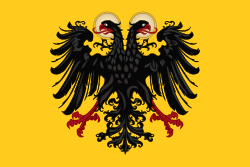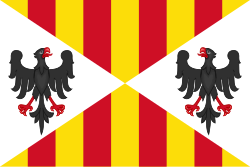1520
| 2. tisíciletí |
◄◄ ◄ 1516 • 1517 • 1518 • 1519 • 1520 • 1521 • 1522 • 1523 • 1524 ► ►►
Události
- 9. ledna – Zemský sněm povolil Štěpánu Šlikovi razit jáchymovský tolar.
- 30. června – Noche Triste – Smutná noc v Tenochtitlánu: aztécké vojsko rozzuřené smrtí Moctezumy II. začalo útočit na španělské conquistadory. Hernán Cortés ztratil osm set mužů.
- morová epidemie v českých zemích
Probíhající události
- 1519–1521 – Dobývání Aztécké říše
- 1519–1522 – Magellanova expedice
Narození
- Česko
- ? – Adam Myslík z Hyršova, člen rodiny Myslíků z Hyršova († 1581)
- ? – Jan Adelf Městecký, kazatel Jednoty bratrské († 25. září 1593)
- ? – Matěj Dvorský z Hájku, český teolog, rektor Univerzity Karlovy († 23. března 1583)
- ? – Šimon Ennius, český spisovatel († 20. února 1561)
- ? – Jan Merlian, český architekt, stavitel a kameník italského původu († 1593)
- ? – Tomáš Rešl, český katolický kněz a náboženský spisovatel († 1562)
- Svět
- 22. února – Fridrich III. Lehnický, slezský šlechtic († 15. prosince 1570)
- 3. března – Matthias Flacius Illyricus, chorvatský teolog, historik a filozof († 11. března 1575)
- 17. března – Thoinot Arbeau, francouzský hudební skladatel († 23. června 1595)
- 3. dubna – Vincenzo Galilei, italský loutnista, otec astronoma Galilea Galilee († 2. července 1591)
- 1. srpna – Zikmund II. August, polský král († 7. července 1572)
- 10. srpna – Magdalena z Valois, skotská královna jako manželka Jakuba V. († 7. července 1537)
- 13. září – William Cecil, 1. baron Burghley, anglický státník († 4. srpna 1598)
- 6. prosince – Barbora Radziwiłłovna, polská královna jako manželka Zikmunda II. Augusta († 8. května 1551)
- 13. prosince – Sixtus V., papež († 27. srpna 1590)
- 10. listopadu – Dorotea Dánská, dánská princezna, falcká kurfiřtka. († 31. května 1580)
- ? – Adam Bohorič, slovinský reformátor a jazykovědec († 20. listopadu 1598)
- ? – Fabián Puléř, český renesanční malíř († 1562)
- ? – Girolamo Cassar, maltský architekt řádu johanitů († 1592)
- ? – Wilhelm Egckl, německý architekt a stavitel († 16. dubna 1588)
- ? – Christophe Plantin, francouzsko-belgický tiskař († 1. července 1589)
- ? – Martino Rota, dalmátský rytec († 1583)
Úmrtí
Česko
- 31. května – Jan Rak, český básník a teolog (* v letech 1457–60)
- 21. září – Viktorin Kornel ze Všehrd, český spisovatel a právník (* 1460)
- ? – Ladislav z Boskovic, moravský šlechtic pocházející z rodu pánů z Boskovic (* 1455)
- ? – Albrecht starší ze Šternberka a Lukova, moravský šlechtic (* ?)
- ? – Jindřich Kostomlatský z Vřešovic, český šlechtic (* ?)
Svět
- 16. března – Martin Waldseemüller, německý kartograf (* 1470)
- 6. dubna – Raffael Santi, italský malíř a architekt (* 1483)
- 20. května – Petr Berislavić, chorvatský šlechtic (* 1475)
- 30. června – Moctezuma II., aztécký panovník (* kolem roku 1465)
- 2. srpna – Ján IV. Turzo, slezský katolický biskup (* 16. dubna 1466)
- 6. srpna – Kunhuta Rakouská, bavorská vévodkyně (* 16. března 1465)
- 3. září – Hippolit Estei, italský kardinál a arcibiskup ostřihomský a milánský (* 20. března 1479)
- 22. září – Selim I., osmanský sultán (* 10. října 1465)
- ? – Alonso Alvarez de Pineda, španělský mořeplavec (* 1494)
- ? – Čang Ling, čínský malíř (* 1470 ?)
- ? – Gülruh Hatun, konkubína osmanského sultána Bajezida II. (* ?)
- ? – Bartolomé Torres Naharro, španělský básník a dramatik (* 1485)
- ? – Wolf Traut, německý malíř a dřevorytec (* 1485)
- ? – Cuitláhuac, aztécký vládce (* 1476)
Hlavy států
Evropa
Na území dnešní ČR
Itálie
 Sicilské království – Karel V. Habsburský
Sicilské království – Karel V. Habsburský Sardinské království – Karel V. Habsburský
Sardinské království – Karel V. Habsburský Modenské vévodství – Alfonso I d'Este
Modenské vévodství – Alfonso I d'Este Benátská republika – Leonardo Loredan
Benátská republika – Leonardo Loredan Milánské vévodství – František I. Francouzský
Milánské vévodství – František I. Francouzský Florentská republika – Jiulius Medicejský (papež Klement VII.)
Florentská republika – Jiulius Medicejský (papež Klement VII.)
Ostatní
 Svatá říše římská – Karel V. Habsburský
Svatá říše římská – Karel V. Habsburský Papežský stát – Lev X.
Papežský stát – Lev X. Rakouské arcivévodství – Karel V. Habsburský
Rakouské arcivévodství – Karel V. Habsburský Anglické království – Jindřich VIII. Tudor
Anglické království – Jindřich VIII. Tudor Francouzské království – František I. Francouzský
Francouzské království – František I. Francouzský Španělské království – Karel V. Habsburský
Španělské království – Karel V. Habsburský Polské království – Zikmund I. Starý
Polské království – Zikmund I. Starý Uherské království – Ludvík Jagellonský
Uherské království – Ludvík Jagellonský
Blízký Východ a Severní Afrika
 Osmanská říše – Selim I., po jeho smrti Sulejman I.
Osmanská říše – Selim I., po jeho smrti Sulejman I. Perská říše – Ismail I.
Perská říše – Ismail I.
Dálný Východ a Asie
 Dillíský sultanát – Ibrahím Lódí
Dillíský sultanát – Ibrahím Lódí Tímúrovská říše – Sultān Uways
Tímúrovská říše – Sultān Uways Čínské císařství – Čeng-Te
Čínské císařství – Čeng-Te Japonské císařství – Go-Kašiwabara
Japonské císařství – Go-Kašiwabara
Externí odkazy
 Obrázky, zvuky či videa k tématu 1520 na Wikimedia Commons
Obrázky, zvuky či videa k tématu 1520 na Wikimedia Commons
Média použitá na této stránce
Autor: Dragovit, sources: Moravská orlice s klenotem.jpg (the eagle delivered from), Licence: CC BY-SA 4.0
Heraldická vlajka Moravského markrabství a moravských markrabat.
State Flag and War Ensign of the Kingdom of Sardinia (1816-1848).
Autor: David Liuzzo, eagle by N3MO, Licence: CC BY-SA 3.0
Banner of the Holy Roman Empire, double headed eagle with halos (1400-1806)
Vatican flag before1808
Flag of Austria (1230–1934). Still in use today.
Autor: Sodacan, Licence: CC BY-SA 3.0
Královská standarda francouzského krále (používaný jako státní vlajka Francouzským královstvím v období absolutní monarchie). Používaná byla v letech 1638 až 1790.
Flag of Hungary from 6 November 1915 to 29 November 1918 and from August 1919 until mid/late 1946.
Variant version of a flag of Japan, used between January 27, 1870 and August 13, 1999 (aspect ratio 7:10).
State Flag of the Republic of Florence.
Autor: Oren neu dag (diskuse), Licence: CC BY-SA 3.0
Ancient Flag of Burgundy
Variant version of a flag of Japan, used between January 27, 1870 and August 13, 1999 (aspect ratio 7:10).
Banner of Kingdom of Poland in the 14th century
A seal of Duke Premislaus II from 1290 shows the ruler holding a banner emblazoned with a crowned eagle. During the reign of King Ladislaus (r. 1320–1333), the red cloth with the White Eagle was established as the royal banner. The orientation of the eagle on the banner varied; its head could point either upwards or towards the hoist.
Autor: RootOfAllLight, Licence: CC BY-SA 4.0
Possible flag of Milan during French Domination
The Ottoman flag and Turkey Republic Flag of 1844–1935. Late Ottoman flag which was made based on the historical documents listed in the Source section. Note that a five-pointed star was rarely used in the crescent-and-star symbol before the 19th century.
Flag of the Sultanate of Delhi according to the Catalan Atlas (1375). The flag is grey with a black band in the Catalan Atlas (attached image), not green with a black band as previously uploaded.
The actual grey and black color appears clearly in the primary source (and the Catalan Atlas has plenty of green otherwise, so the grey cannot be a result of color fading), and this interpretation is confirmed by academic sources:
REFERENCE: "....that helps to identify yet another curious flag found in northern India – a brown or originally sliver flag with a vertical black line – as the flag of the Delhi Sultanate (602-962/1206-1555)." in (2010). "On the Timurid flag". Beiträge zur islamischen Kunst und Archäologie 2: 148.
WARNING: This is primary source image, the actual flag is otherwise unknown. The main source pointing to this design is the Catalan Atlas, which as a historical primary source. This image should not be added to articles without clearly attributing its primary source origin, and secondary sources are additionally desired if available (such as the one above). Note that FOTW (where most of those flags on Commons are adapted from) is based on user contributions like Wikipedia, and hence not authoritative.
OVERWRITING OF FICTIONAL FLAG:
flag of the Duchy of Modena before 1830 according to Flags of the World
Při zobrazení tohoto souboru lze snadno přidat orámování
Autor: HetmanTheResearcher, Licence: CC BY 4.0
Own work. Source: Lux-Wurm, P. C., & Zaragoza, Martha. (2001). Les drapeaux de l’islam : de Mahomet à nos jours. Buchet-Chastel. P.252-253.
Autor: Tento vektorový obrázek byl vytvořen programem Inkscape ., Licence: CC BY-SA 4.0
Official flag of the Republic of Venice used by the Doge Domenico Contarini.






















